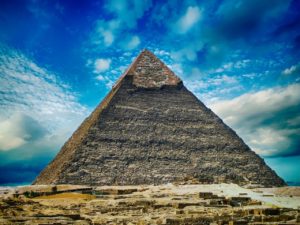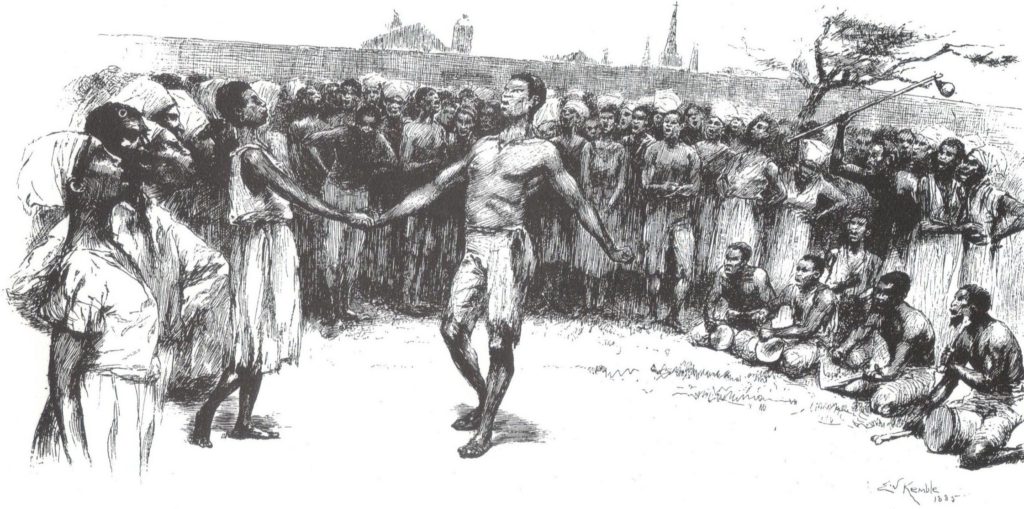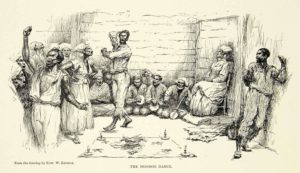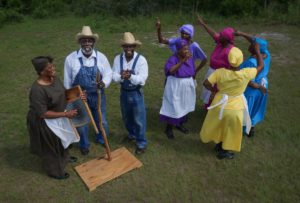Lesson 1: What is Kamta (Shamanic Tradition)?

Kamta is a Kemetic Shamanic tradition based upon Kemetic (Ancient Egyptian) theology, Kongo-Angolan philosophy, Caribbean Spiritism–particularly Espiritismo Cruzado (Afro-Cuban Crossed Spiritism), and Afrikan American Spiritualism. Since Afrikan Americans were never given a chance to define and name their spiritual heritage, this tradition is called Kam Ta (literally translates to the Black Land) for three reasons. First, because of the spirits who reside in KAMTA (see the Maa Aankh). Second, it is a reference to its’ Kemetic spiritual roots, and third, the term Kamta is an honorary pun to the Afrikans and early Afrikan Americans, who fought against slavery by conducting religious services in secret (the dark) at the groves, ravines, fields, and hush harbors, despite the looming threat of being severely punished if caught. Since Kamta is worked primarily with the mind, it can be practiced anywhere including at home, work, school, while driving, etc., so long as one has a strong rapport with their ancestors and lives a Maa (balanced, lawful, orderly, righteous) life.
The History of Kamta
The shamanic roots of Kamta can be traced back to the Afrikan American conjure culture commonly called Hoodoo. These cultural beliefs were brought to North America from the Kongo-Angolan basin during the Transatlantic Slave Trade. Contrary to popular belief, Hoodoo was not a magickal tradition that anyone could use to get love, money, improve love life, etc. This is a misconception created by unscrupulous marketers and appropriators. To truly appreciate the wisdom of the tradition it needs to be clearly understood that when the Afrikans arrived on the shores of North America. They were stripped of their language and were prohibited from congregating. They were restricted from playing the drum and even forbidden by the slave owners from praying and worshiping God. Out of fear from the slave owners that they would revolt against their oppressors, as the Afrikans and their descendants had done in the Haitian Revolution. These Afrikan men, women, and children lived in constant fear of being emotionally, mentally, physically, and sexually abused at any time, because they were viewed by the dominant society as being less than human.

So they took the fragmented spiritual memories of their Afrikan homeland and borrowed anything and everything that they could get their hands on, from Native American herbal lore, European folklore, to Jewish mysticism, Protestant Christianity, etc. to create a shamanic tradition to help them to physically, mentally, and spiritually survive the brutality of slavery, which is what people call today Hoodoo.

It is an insult to the memory of the founders of the tradition, to believe that they simply sat down to create a magickal tradition.
Since Afrikan Americans did not regularly use the term Hoodoo to describe their spirituality, numerous theories exist as to its’ origin. However, the best theory is since the first Afrikans enslaved were abducted from the Kongo-Angolan region, and. Most of these Afrikans were either Christian converts or (at least) familiar with Christianity before being enslaved and shipped to the Americas by the Portuguese and Spanish slave traders. Yet, many of these Afrikans continued to practice their ancestral beliefs. The term Hoodoo is most likely a corruption of the Spanish word “judios” (pronounced hoo-dee-oh meaning Jewish), referring to the fact. That like the Jews who heard the teachings of Christ but continued to practice Judaism. The Afrikans who converted to Christianity continued to practice their indigenous ancestral beliefs and were referred derogatorily as judios, which became Hoodoo.

Initially, according to Katrina Hazzard-Donald, author of Mojo Workin’: The Old Afrikan American Hoodoo System, Hoodoo was a religion and healing tradition, that depreciated into what it is known as today because of suppression and commercialization. As a result, a lot of the spiritual practices were syncretized with Protestant Christianity and became the basis of the Black Church. Due to slavery, the theology behind these spiritual practices was lost, which has resulted in a watered-down spirituality that exists today.
However, when the Kemetic theology was adopted and applied to the remnants of the Kongo-Angolan philosophy that survived in North America, Kamta was created. Although Kamta is considered to be a Kemetic spiritual tradition, it differs from other Kemetic systems because of its distinct Kongo-Angolan influences, which sees the Kemetic divinities as a commission or tribe of spirit guides that are to be partnered with instead of as divinities that need to be served and worshipped. Success in Kamta depends heavily on having a strong rapport with one’s ancestors and living one’s life according to the Maa Aankh, a Kemetic and Kongo inspired cosmogram.

Thank You, I am a new subscriber. Phenomenal information. So this is what I have been experiencing, Power beyond belief